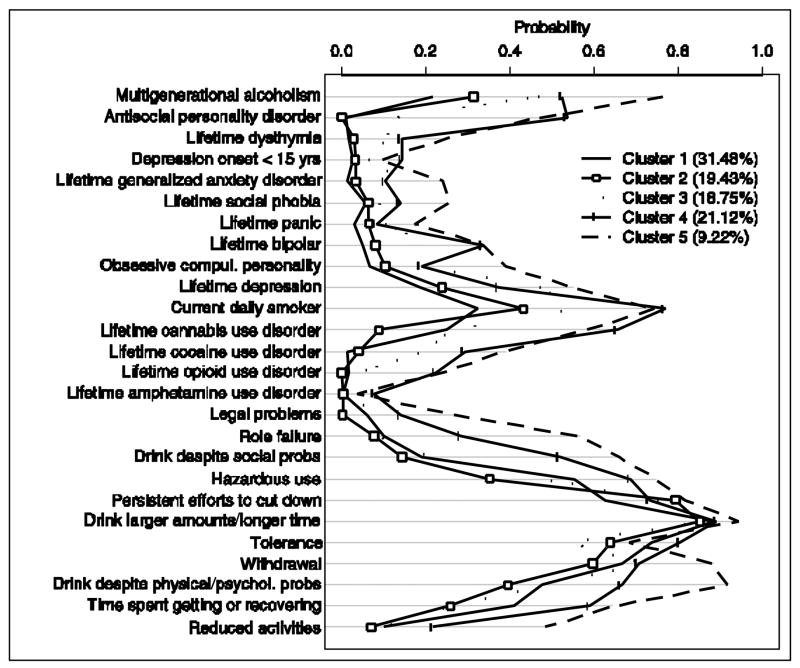Fig 1.
Conditional probabilities of the 26 categorical variables according to resultant five-cluster model derived from latent class analysis (Displayed separately in Figure 2 are two of the three continuous variables in the analysis [i.e., age of drinking onset, and age of onset of AD]). Large differences between clusters were determined by the presence/absence of multigenerational familial Alcohol Dependence (AD), the presence/absence of antisocial personality disorder, the presence/absence of lifetime major depression, the presence of daily smoking, cannabis, cocaine, and opioid use disorders, hazardous use of alcohol, and alcohol tolerance and withdrawal. Clusters converged around two of the DSM-IV AD criteria (i.e., drinking larger amounts of alcohol for a longer time, and persistent efforts to cut down on drinking).

